Routes and hiking in Cap de Creus Natural Park
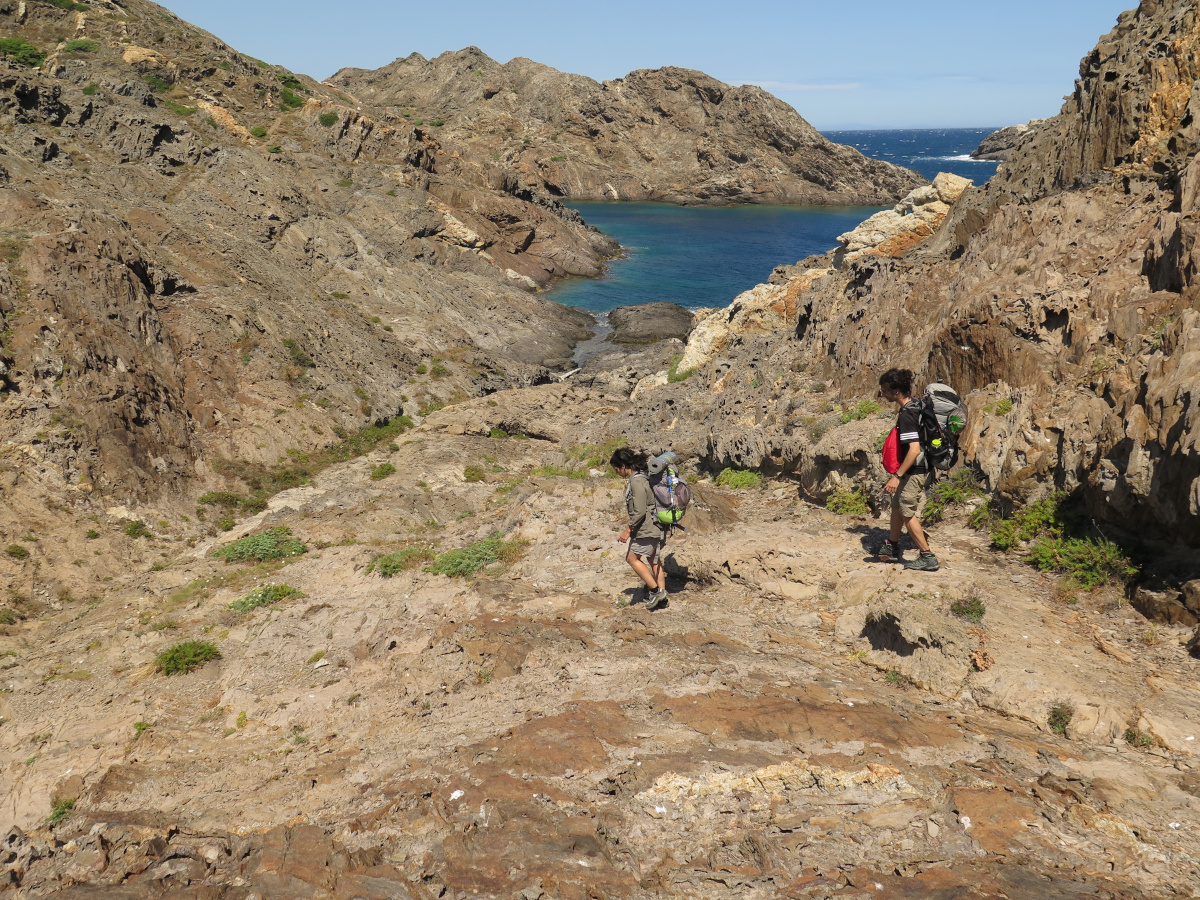
"Cataclysmic and stark", as Josep Pla said of Cap de Creus, it leaves no one indifferent. Painters such as Dalí, Pitxot and Koyama, writers such as Pla and Foix, and filmmakers such as Buñuel have found inspiration in this inhospitable landscape. The film "The Light from the Lighthouse at the End of the World" was filmed around the tip of Cap de Creus in 1971, with actors such as Kirk Douglas and Yul Brinner. For this occasion, a lighthouse was built specifically for this purpose, but it was demolished in 1998.
Cap de Creus is located at the eastern end of the Pyrenees, in a lunar landscape battered by the north winds. The Natural Park of Cap de Creus belongs to the Girona region of Alt Empordà, to the north of the Gulf of Roses, and is the most easterly point of the Iberian Peninsula.
- IF YOU WANT to jump into the ITINERARIES: Click here.
The tip of Cap de Creus
The area of the Cap de Creus headland is one of the two Integral Nature Reserves of the natural park, together with the Norfeu headland. We are at the most easterly point of the Iberian Peninsula and the point where the Pyrenees spills into the sea, a cut in the coast where the wind from the north has a hurricane force, which can even exceed 150 km/h.
The oldest rocks in Catalonia, the greyish schists, which are interrupted by white and red pegmatite seams, outcrop in this area. At some points, it can be observed how the rocks form capriciously folded veins that give an idea of the time of their formation, some 300 million years ago, when these materials were subjected to high temperatures (650 ° C) and great pressures (between 11 and 14 km deep).
Along the route we can observe plant species adapted to the dry, wintry climate of the area and the rocky substratum: the cushion cushion cress (Astragalus massiliensis), salt cedar (Limonium tremolsii), white rockroses and junipers (Juniperus oxycedrus). Limonium tremolsii (Limonium tremolsii) is a plant species typical of the habitat of the cliffs and rocky coasts of Cap de Creus. It is endemic to the NW Mediterranean.
Numerous migratory birds find rest and food in this sector of the coast such as: gannets, shearwaters (Balearic and Mediterranean), gulls, terns, among many others. If you are lucky you may see dolphins, sea turtles, and the occasional distant spout of a fin whale.
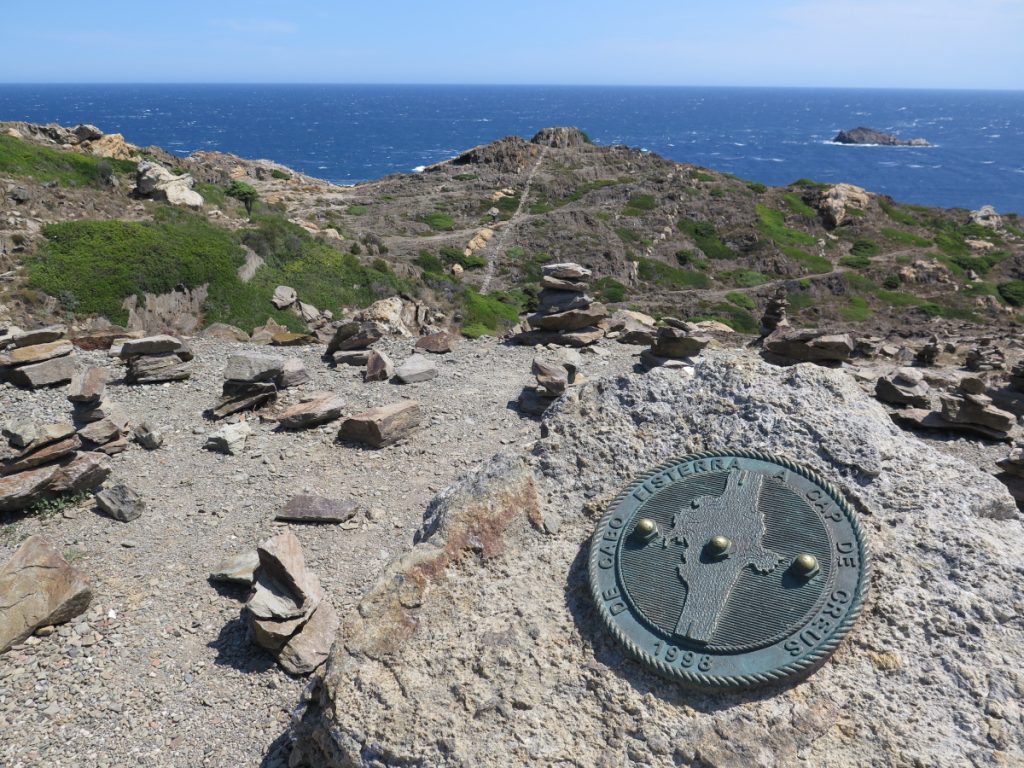
Itineraries at Cap de Creus Point:
The itineraries are of medium difficulty, the terrain is steep and steep, with cliffs and narrow passages, so we recommend that you take care of children, wear good footwear and bring water, especially in summer. It goes without saying that we are in the Cap de Creus Integral Nature Reserve, so we must take extreme care to protect the ecosystem: access and circulation is exclusively at the marked points and itineraries; the extraction or collection of minerals, rocks, plants or animals is not permitted; camping and lighting fires are not allowed.
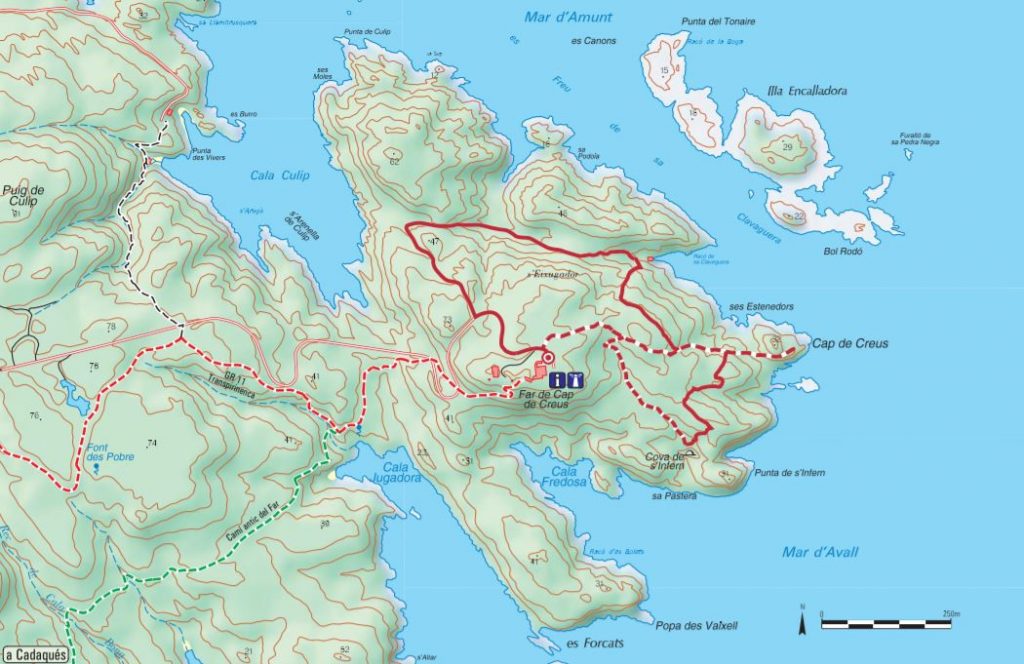
Along the routes we will tread on inhospitable schist rock formations and we will see how the vegetation has adapted to the extreme conditions offered by this point of the coast. We will also discover large blocks of pink and white pegmatite-type rock, which have been worked by erosion into curious shapes. It is also worth noting the presence of easily observable minerals.
Circular route to the Punta del Cap de Creus
Circular route (Combination of the two previous routes). 1600 m / 90' / medium-high difficulty.
Circular itinerary, 90 minutes, covers the whole of the end of the promontory, linking the route to the Punta de Cap de Creus and the Cova de s'Infern, plus an inclusion in the sector of s'Eixugador. This is our recommendation if you want to make a short excursion in the area and enjoy the scenery of Cap de Creus.
The tour starts at the Cap de Creus lighthouse (87 m), where the Cap de Creus Space is located, which houses an information centre and a small museum that will allow us to learn more about this unique environment. The lighthouse was built in the mid-19th century, on the foundations of an old watchtower that protected fishermen from the fishing of the flaming torrent and warned Cadaqués of the presence of pirates. Today the lighthouse is still in operation, unlike the acoustic lighthouse which emitted sounds on cloudy days and was demolished in 2006. A photosensitive cell starts the lighthouse when it gets dark and its white light has a range of 63 km.
It is necessary to follow the red signs and the signs that will lead us through the easternmost sector of the Cap de Creus headland, among rockroses, mastic trees and junipers, along three possible routes of medium difficulty in general:
It allows you to see the islets of Masa de Oros (or sa Rata) and S'Encalladora.
Island of Masa de Orossa Rata or sano Freu, an islet formed of shale located in front of the tip of Cap de Creus, at the mercy of the sea currents and the north wind that blows more strongly here than anywhere else. According to some authors, its name is due to the little bit embedded in the rock which, reflected by the sun, shines like gold. And sa Rata because of its silhouette.
The Island of S'EncalladoraMariblanca, or White Island, is an immense pegmatite outcrop resting on a schistose base, six hundred metres long, exposed to the waves and the tramontana. Within the protected marine area of Cap de Creus, the North and the island of S'Encalladora is an integral nature reserve. Its name comes from the fact that in ancient times many boats ran aground because of the wind and waves.
In the sector of S'Eixugador and as far as Clavaguera the path flanks through the vegetation of rushes and cattails that grow when they find humidity, dry for a good part of the year.
Other routes
Cape Creus headland (round trip) 1000 m / 50' / medium-high difficulty.
50 minutes round trip. We head towards the point, at the beginning there are no markings, although they soon appear. Almost at the end, a narrow passage over the cliff drops us off at the tip of Cap de Creus. From this point the Pyrenean Path GR11where the eastern Pyrenees rise from the sea.
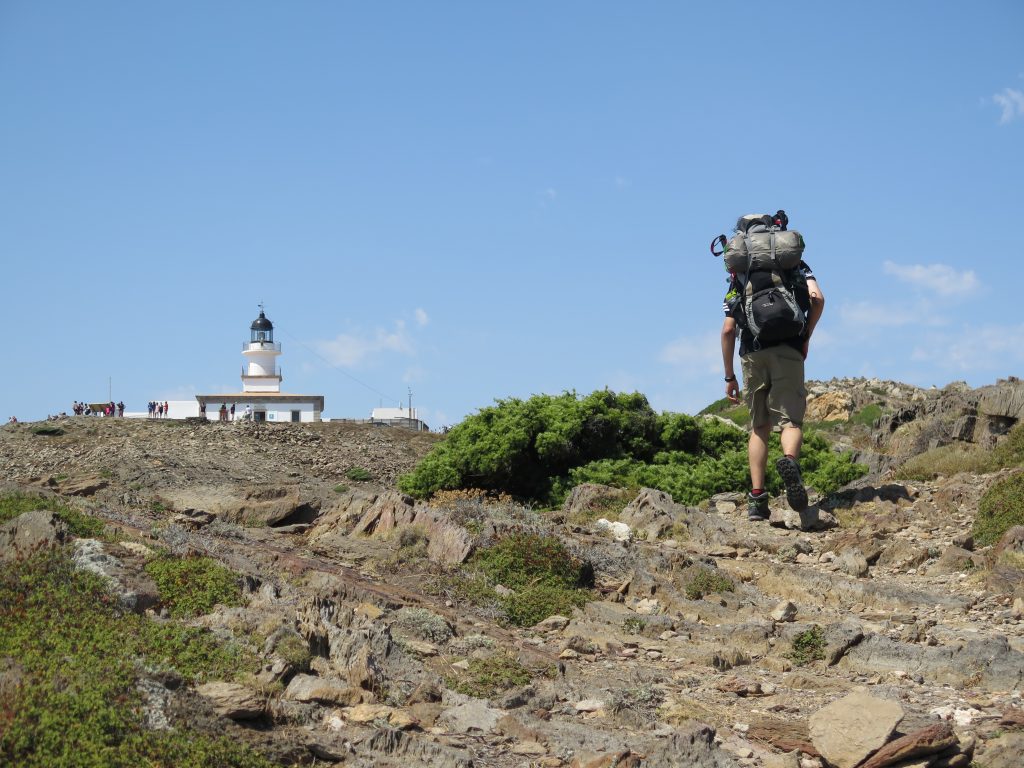
S'Infern Cave. (Round trip) 850 m / 40' / medium difficulty.
Itinerary to the S'Infern Cave40 minutes round trip. It should be borne in mind that the cave cannot be accessed from dry land, as access to it is dangerous. The s'Infern cave is a hole forged between schist due to erosion caused by the force of the sea on a weak rock plan (shear zone). Some say that the origin of its name is due to the first rays of the morning sun, which are so reddish that, reflected by the sea water on the cave walls, they give the sensation that it is lit up as if it were hell.
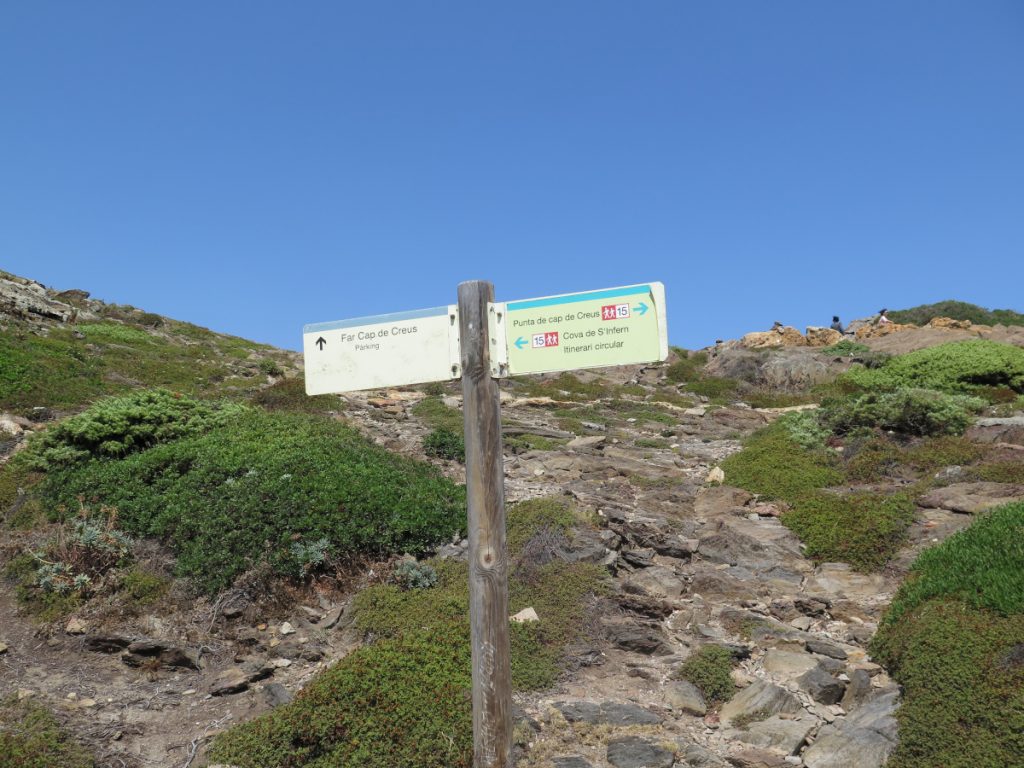
Culip Cove. 2000 m / 45' / medium difficulty.
A short excursion allows us to discover one of the most bucolic spots on the Costa Brava. Until the closure of Club Med, a visitor's pass issued by the Club was required to enter. There were 400 flats in the area built during the Franco era, when Cap de Creus was not under any form of protection. In 2004 the Club was closed and the area was recovered, years of demolition of the 400 flats to recover the marvellous natural landscape.
Old Lighthouse Road to Cadaqués, 8 km / 120' / medium difficulty.
This is the route that linked Cadaqués with the lighthouse, a route with hardly any gradient that can be a nice option for the whole family. 8 km during which you will discover the most beautiful corners of the Parc Natural del Cap de Creus, and which can be joined with the Punta itinerary, to get even closer to the sea.
GR-11. Pyrenean Path.
At its end (or start) the Senda Pirenaica runs along the Punta de Cap de Creus. From the lighthouse, the path will go to the point itself to finish the adventure. (READ ALSO: Stage 46: Port de la Selva - Cap de Creus)
A bit of sightseeing: Must-see places in the area
Cap de Creus Natural Parkis advisable to have a walking tour along the coves of Cap de Creus from El Port de la Selva to the Cap de Creus lighthouse, a beautiful coastal route lasting approximately two and a half hours.
CadaquésCoastal village with one of the most traditional natural harbours. To the north is the small bay of Portlligat. Here you will find the summer residence of the famous painter Salvador Dalí and his muse, Gala, nowadays converted into the artist's house-museum. It includes visits to Dalí's studio, the library, the private rooms, the garden and the swimming pool.
Port de la SelvaA fishing enclave and fishing village. Highlights include the church of Santa Maria de les Neus, the fishing port and the moll-mirador d'en Balleu.
With more time
Sant Pere de RodesBenedictine abbey built between the 10th and 14th centuries. Nearby is the hermitage of Santa Helena.
EmpúriesArchaeological park with Greek and Roman ruins. Inside you can visit the Museu d'Arqueologia de Catalunya (Archaeological Museum of Catalonia) free of charge.
Peraladamedieval village, known for its castle and its wines.
Don't miss any adventure in the Pyrenees!
